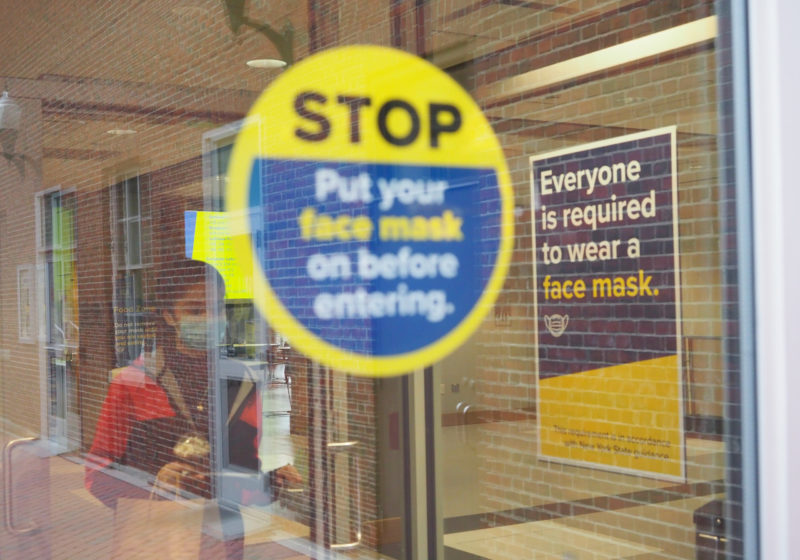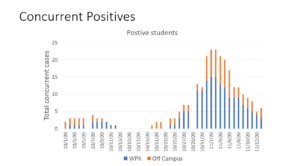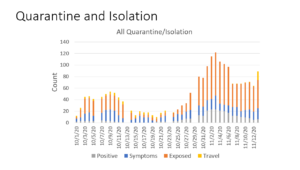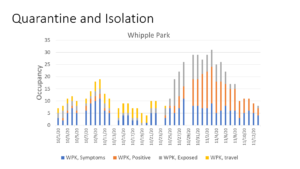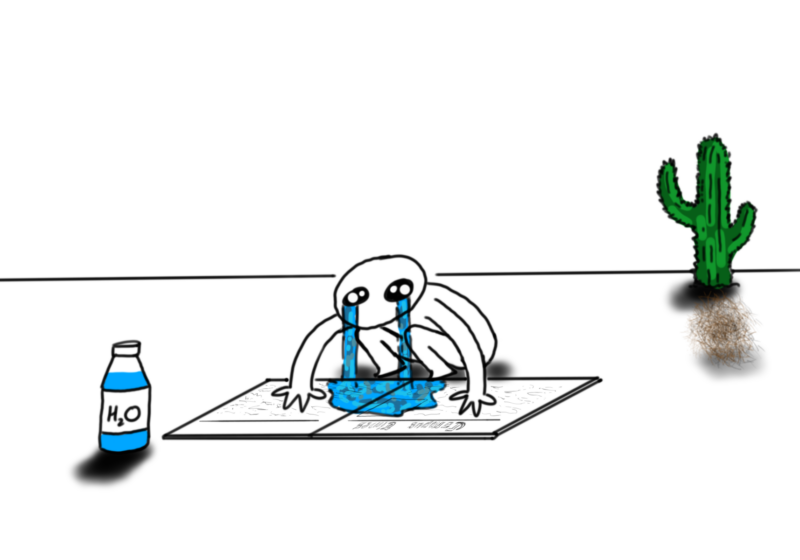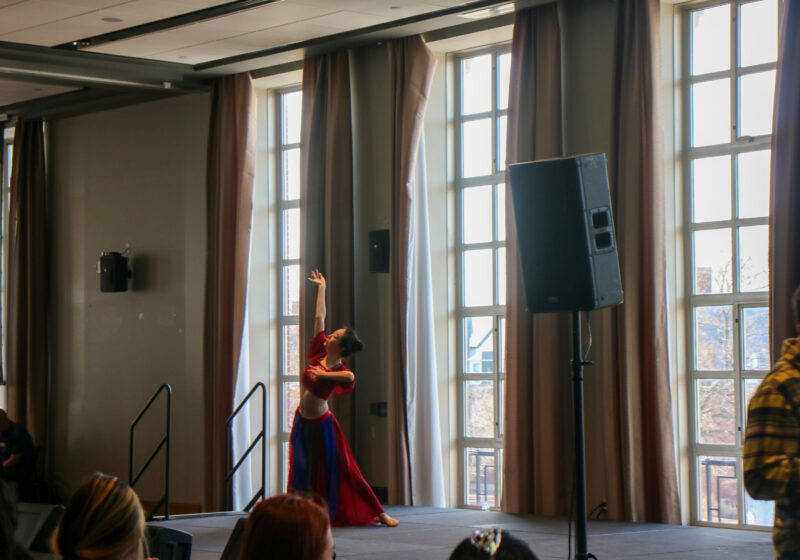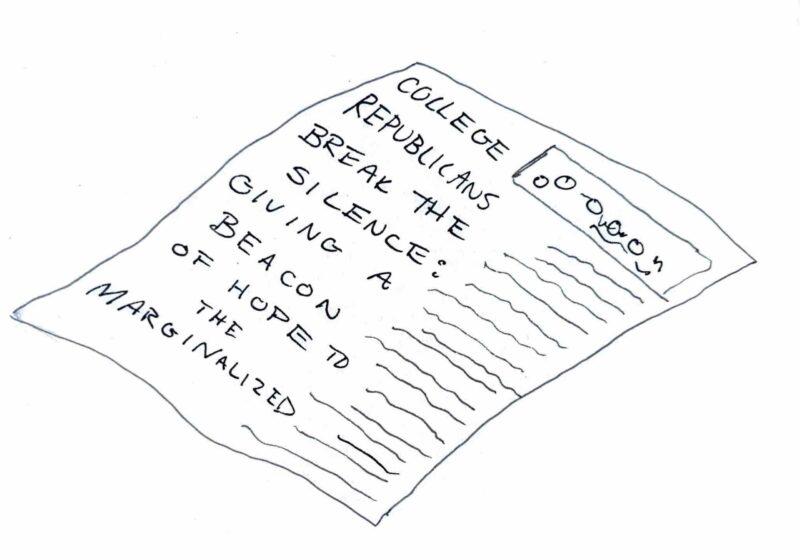This article is part of a series about coronavirus on campus during the Fall 2020 semester.
For the first two months of the fall 2020 semester, students held their breath waiting to get sent home after what felt like an inevitable COVID-19 outbreak. Keeping a college open during a pandemic seemed like an impossible goal, and as colleges like nearby St. John Fisher cancelled in-person classes following outbreaks, many members of the UR community worried our school would follow suit. It proved challenging, but the University managed to achieve their goal of a hybrid semester.
On the second day of classes in late August, New York governor Andrew Cuomo announced that universities were to pause in-person activities for two weeks if there were 100 cases, or a 5% test positivity rate within a preset two-week period. Only a few weeks later, the University published their plan for a potential pause.
The plan included moving all classes fully online, converting dining to takeout-only, and shutting down in-person activities, library spaces, and athletics. A pause would be temporary, but could last more than the minimum two weeks.
The goal of a pause is to mitigate spread of the virus, increase or free up capacity for quarantine and isolation, and to reevaluate/implement policies to prevent another outbreak, all in order to avoid the worst-case scenario of another full shutdown like the one in March.
“I thought we had a good chance of going into a pause [last fall],” Director of Environmental Health & Safety and Coronavirus University Restart Team (CURT) co-chair Mark Cavanaugh said. “I knew it was going to be a challenge but I also knew we had the proper protocols in place to make it work. So, at some point, we had to turn it over to the students, right?”
The University implemented many policies to limit the spread of coronavirus on campus, including a surveillance testing program, Dr. Chatbot, a ban on guests in residence halls, capacity limits, and masking and distancing requirements.
For the first month of the semester, the policies seemed to be working tremendously well. Four students were identified as positive cases upon return to campus and were immediately isolated. Protests against police brutality after the video of Daniel Prude’s death was published did not seem to cause a spike in cases among the University community, and the county’s infection rate remained low, too. The first new positive cases for students, faculty, or staff did not occur until late September.
There was a small bump in positive cases, people reporting symptoms, and exposures at the beginning of October, but by the middle of the month the number of people in quarantine and isolation had declined.
A few days after Halloweekend, UR hit its peak with 23 confirmed cases between Nov. 2 and 3. The entire two week period, from Oct. 24 to Nov. 6, only contained 26 new cases, well below the 100-case threshold.
According to Vice Provost and Director of University Health Service Dr. Ralph Manchester, this outbreak caused the biggest strain on isolation spaces. On Nov. 3, the total number of students in isolation or quarantine reached its peak, forcing the University to outsource hotels such as the Strathallen for quarantine, causing additional costs.
Dave Bujak, the Emergency Preparedness Manager who helped oversee quarantine and isolation, was relatively pleased with UR’s semester compared to some schools across the country that had massive outbreaks. “Our numbers were low, we didn’t run out of space, nobody was on the streets, we didn’t really have a massive outbreak, and we did not trigger any thresholds that required us to shut down,” Bujak said. “We managed to keep it just enough to not get in trouble.”
Manchester also pointed out that the infection rate remained far lower than originally expected throughout the semester. Beyond that, he took pride in the fact that nobody at UR was hospitalized this semester due to COVID-19.
Nearly every administrator interviewed for this project expressed gratitude to students for following guidelines enough to keep cases down.
“We want to thank the students for their compliance,” Cavanaugh said. “I mean, we did it, right? So, they should be congratulated that we made it through the semester like we had wanted to and had hoped to, and that really is thanks to the students.”
“There was a real respect for it and real respect for a potential of a spread,” Head Athletic Director Eric Rozen said. “And I think everyone played an important role in that.”
“This is a resilient bunch […] You found a way to get it done this fall, we’re gonna find a way to get it done in the spring, and we’re all gonna be better for it,” Head Football Coach Chad Martinovich said.
“Even with all of the best-made plans,” Deputy to the Provost and CURT co-chair Amy Happ said, “If students didn’t do the great job that they did, we wouldn’t have been able to maintain in-person [instruction].”
Though the curve flattened after the early November outbreak and new cases began to slowly decline, the University faced new challenges as case counts in the greater Rochester area were rising. On Nov. 10, Monroe County was put into the precautionary “Yellow Zone,” decreasing the maximum size of outdoor gatherings from 50 to 25 people and limiting tables at dining halls to four people. Two weeks later, when most students had already left campus for Thanksgiving break, the county entered the “Orange Zone,” further decreasing gathering size to 10 people and shifting dining to take-out only.
This coming semester, many things are expected to change. Administrators and campus health officials now have a lot more experience running the University during a pandemic. Meanwhile, in-person faculty and staff are eligible for vaccination, though availability is scarce.
But the relative success of this past semester does not make it a given that the next semester will run smoothly.
Haven Worley contributed to the reporting for this article.
